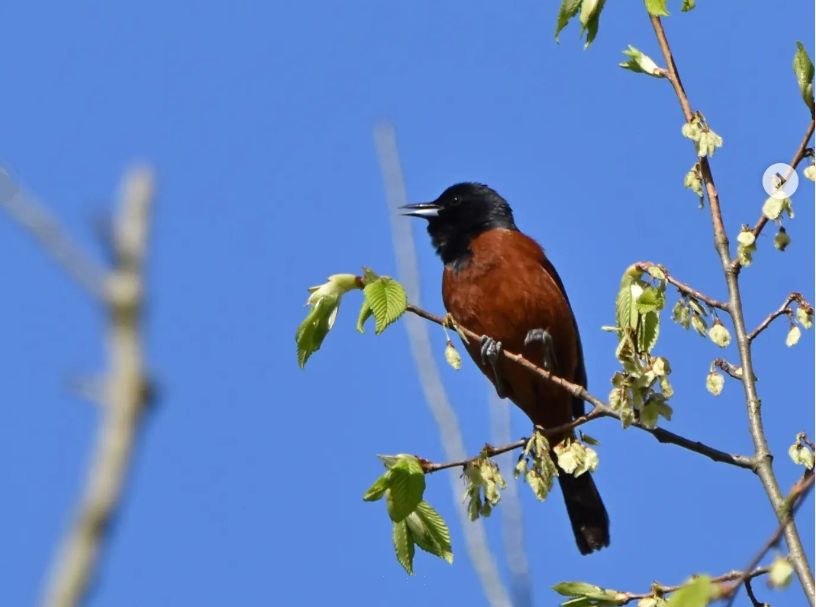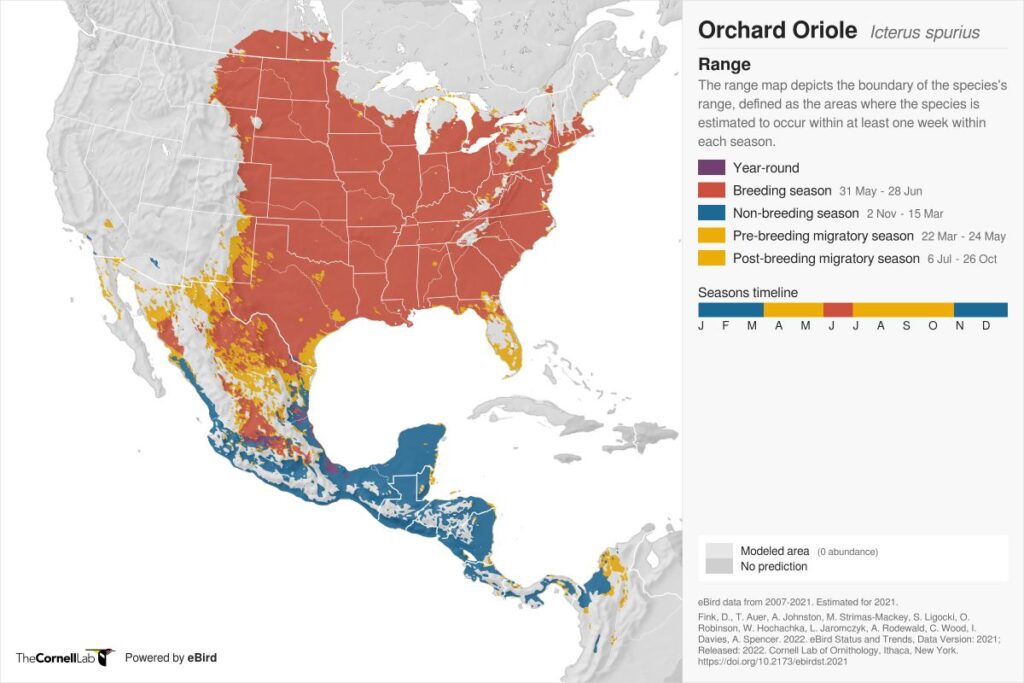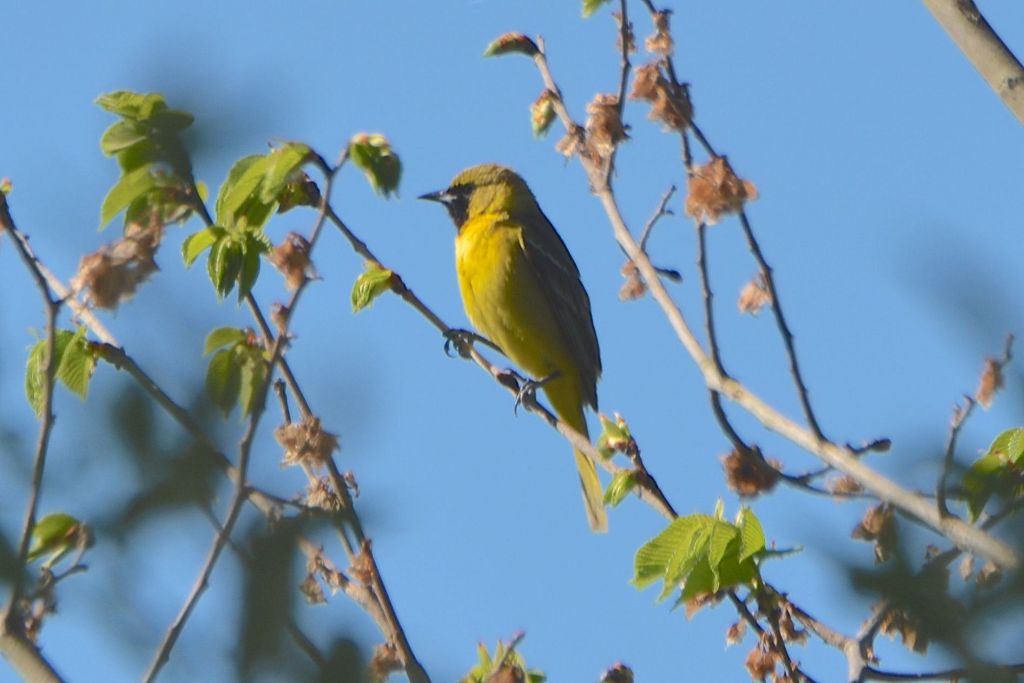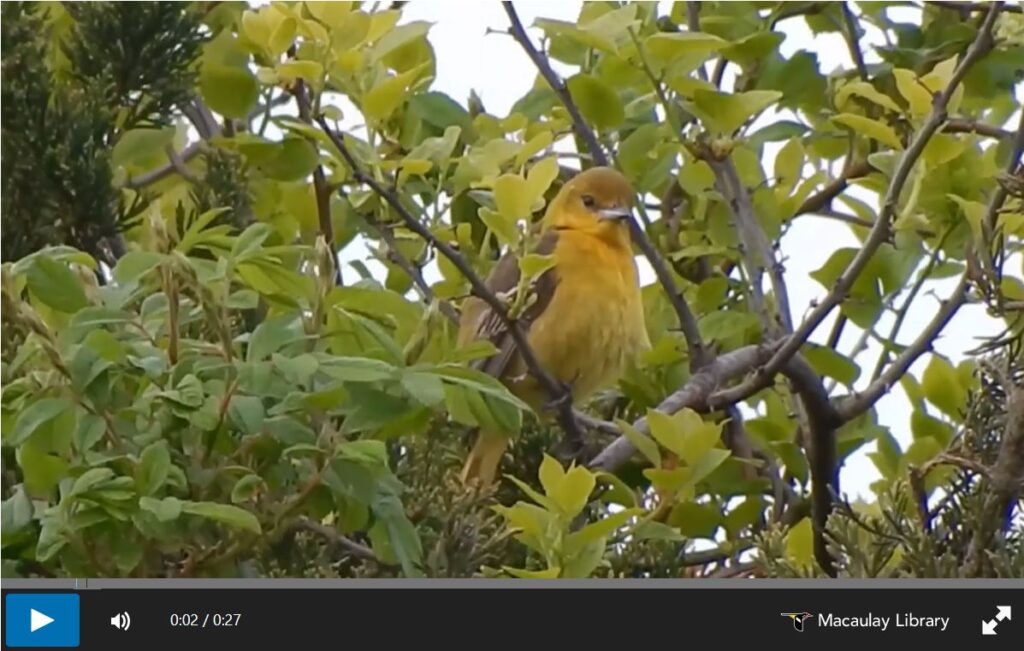
9 May 2023
This year the orchard orioles, smallest of the blackbirds (Icterids), returned to Pittsburgh in late April. We knew they were back when we heard this male singing near Frick Park’s Nine Mile Run boardwalk on 26 April. Ten days later we returned to the boardwalk and heard him again but it was a different bird — an immature male — and we remembered this: You can’t assume the singing bird is an adult male. In fact in the spring all the orchard orioles sing.
Orchard orioles (Icterus spurius) spend most of their lives in Central and South America and only a short time on their breeding grounds in southwestern PA from late April to August/September.

Adult males start singing in Central America before they head north. When they get here they sing during the nesting season and continue while feeding young. Then they fall silent. May is the best time to hear them.
Adult male voices are wiry and rapid with no pattern to the song. Here are two examples:
Immature males sing, too.

One-year-old males look different than adults and to a discerning listener — the female orchard oriole — they also sound different. Singing is a learning process and these yellow-green guys with black faces aren’t accomplished songsters yet. Here are two examples of immature male songs.
Females sing as well. Birds of the World explains: “Most tropical icterids have a female song and, ancestrally, the whole family is thought to have this behavior. Female Orchard Orioles sing throughout the breeding period with songs that are structurally distinct from those of males. … Their songs are statistically different in 5 of 8 acoustic variables (full song duration, syllable duration, maximum frequency, bandwidth and percent pause), and are easily distinguished by ear in the field.”
Click on the screenshot of the female below to watch and hear her sing.

So just when you think that singing bird is male, remember there are species in which all of them sing.
Read more the orchard oriole at All About Birds.
(photos by Charity Kheshgi and Donna Foyle, range map from eBird, female oriole screenshot from Macaulay Library; click on the caption links for further details)